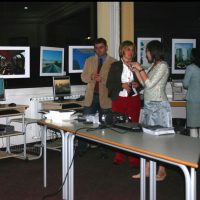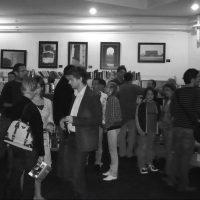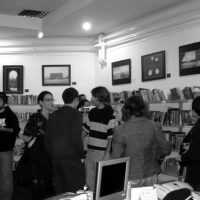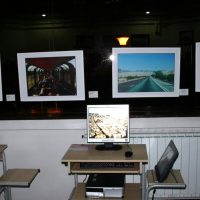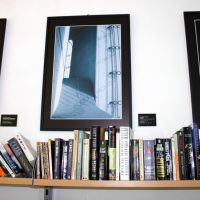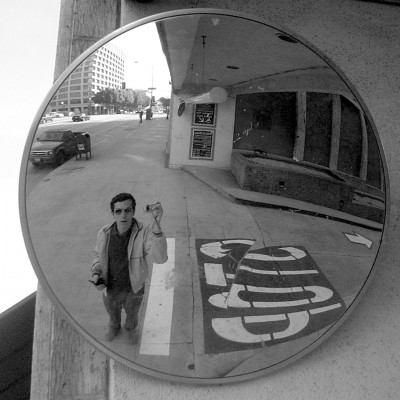America. A country with many challenges, different in lots of ways from the European continent, has always been in the focus with its varieties. Whether it is the east or west coast, it has always to do with the notion accepted as the melting pot, a place of mixed cultural groups, races and religions. Differences are strongly visible, so when one happens to be there, they go through the cultural shock caused by new nation, architecture, climate and customs. The wide open spaces at the ocean’s edge, gas stations, large boulevards, pop art, the voice of Aretha Franklin, an endless highway going to another metropolis, subway. Another musical ghetto, specific urban architecture reaching high into the sky. These are some images coming first to one’s mind, deja-vu, or some scenes from Casavetes or even Jaramush’s film. Some similar motifs were caught by Drazen’s camera lens through his memory reconstruction and plunge into the new environment. When one mentions some similar ways of documenting things from everyday life, which is a sort of a personal diary of events that have passed, some famous American photographs ought to be remembered. Due to this particular climate and environment in which these photographs grew up, they have changed our whole view of art photography. Alfred Stieglitz, Walker Evans, William Egglestone. Robert Frank may be the most interesting one in the context of Drazen’s work because this is the closest to a traveler’s sensibility. These are street scenes, extracts from everyday life with a new reflection.
Drazen grew up in the environment with a different value system, which affected both his acceptance of things around him and the medium he communicates through. This implies that the articulation of ideas, after his visit to America, finds its expression in a documentary approach to art photography. Through his daily documentation of running events, friends, and himself, Drazen was carving his sensibility toward things around him. He uses photography as a medium and captures the time with his photo camera like Cartier – Bresson. This little camera has become Drazen’s extended hand on his traveling. Drazen captures everything that draws the attention of a child, curious man or a traveler who sketches the customs he or she sees in the new environment. All these tiny details suddenly turn into serious scenes witnessing a photographer’s everlasting question: how to catch the world around you, spontaneously in a moment, without directions and a studio? The details that Drazen sees sometimes seem like innocent motifs of landscape, but looking at them carefully, one can see cultural differences, different physiognomies, a certain distance between people, mutual vacuum of an empty space in the middle of the large one. To Drazen, the visit to America is full of motifs one sees everywhere, but he notices them and compares them with those in his own country: abandoned camionette, melancholically faraway look of a passer-by, people on a sunny terrace. Everything is familiar, but somehow different and new – even the sun shines from a different angle. The scenes Drazen catches on his traveling are interesting in their loneliness. These are empty landscapes, where natural elements speak without actual people. These are looks from different places, cars, or balconies, in the streets, restaurants, where window frames themselves make a specific way of looking (framed time).
Sometimes the curtain shade he approaches with his camera, creates an interesting pattern or motif. This changes the way we look at the art photography, giving it the ornament (characteristic for the East) or just bars of minimized details. The scenes are sometimes clear, almost minimalistic, inspired by the American painting from the seventies. These are the elements of a seeker who halted on his journey to record authentically his course in his notebook, like a documentarist. Scrutinizing the reality around him daily, without technical accessories, he is led by instinct of an observer. Such photos are filled with a characteristic atmosphere under the influence of recording in different day intervals. The atmosphere of the afternoon, morning and breakfast, twilight, or noon, is defined by a particular light element. Sometimes the exterior photographs are taken from the interior. It is only the silence that is revealing itself bashfully in room light. Sometimes you can only see the shades, phantoms of light, following you. In Drazen’s photographs they speak unsaid dialogues, see friends you cannot see, indicate the play of light on the pavement. In a sunny afternoon, sharpened by contrasts, shades and palm trees, rambles some neighbor or street musician.
Text: Irma Markulin ; Translation: Sonja Przulj
2007 – NUBRS and American Corner Banja Luka, BiH






















